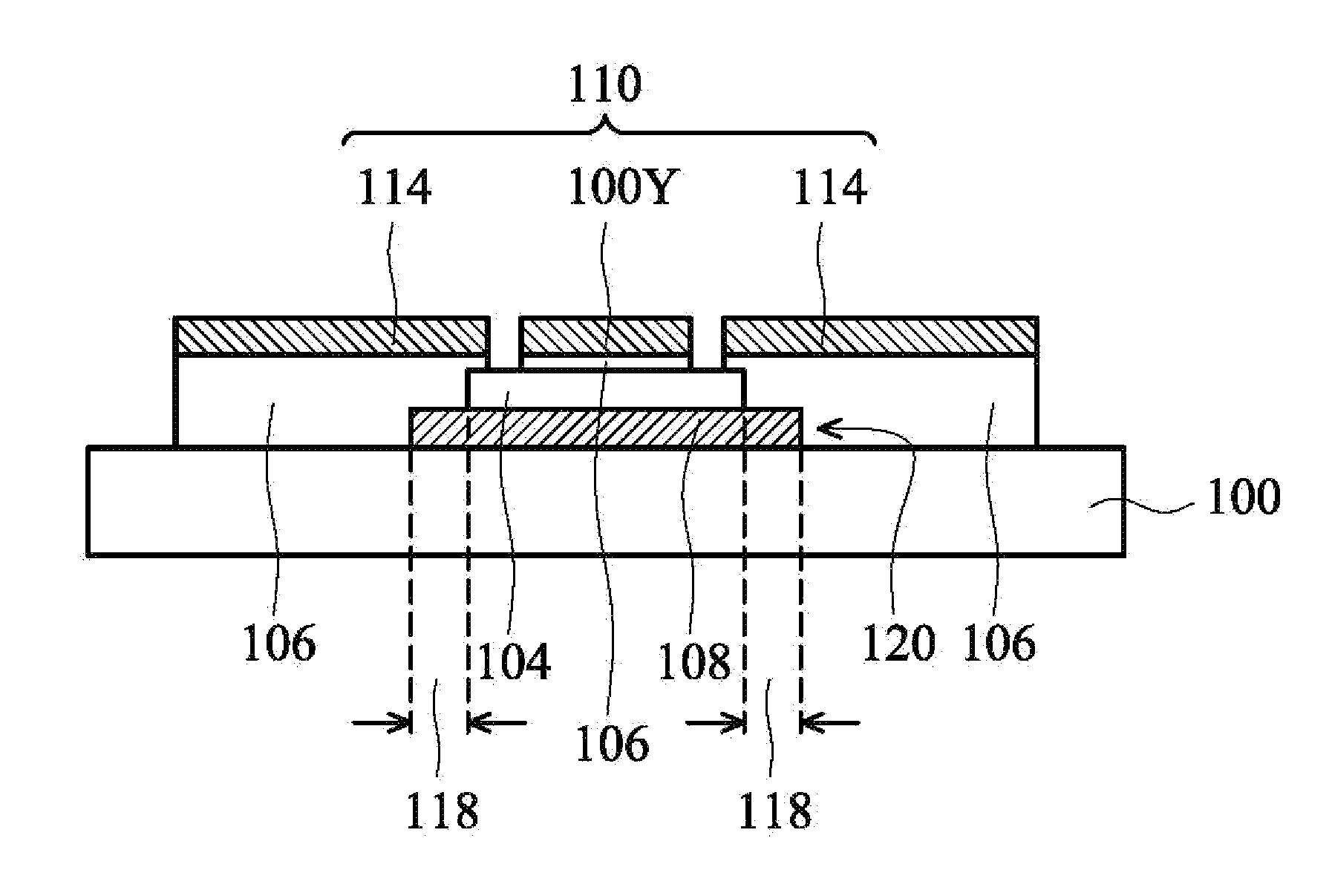Touch-sensor structures and methods of forming the same
a technology of touch sensor and structure, applied in the field of touch device technology, can solve the problems of short or open issue between the sensing-electrode pattern of the touch sensor, failure to meet the needs of the user, and poor so as to prevent the second conductive layer from forming, the touch-sensing function of the conventional touch panel is often poor
- Summary
- Abstract
- Description
- Claims
- Application Information
AI Technical Summary
Benefits of technology
Problems solved by technology
Method used
Image
Examples
Embodiment Construction
[0034]The following description is of the best-contemplated mode of carrying out the disclosure. This description is made for the purpose of illustrating the general principles of the disclosure and should not be taken in a limiting sense.
[0035]In the descriptions that follow, the orientations of “on”, “over”, “above”, “under” and “below” are used for representing the relationship between the relative positions of each element in the touch-sensor structures, and are not used to limit the disclosure.
[0036]In the accompanying drawings, in order to clearly illustrate the characteristics of embodiments of the disclosure, each element in the touch-sensor structures may not be drawn to scale. Moreover, the embodiments of the touch-sensor structures and the methods of forming the same are described in an orientation in which the substrate is disposed at the bottom. However, in at least some touch panel applications, the touch-sensor structures are provided for users in an orientation in wh...
PUM
 Login to View More
Login to View More Abstract
Description
Claims
Application Information
 Login to View More
Login to View More - R&D
- Intellectual Property
- Life Sciences
- Materials
- Tech Scout
- Unparalleled Data Quality
- Higher Quality Content
- 60% Fewer Hallucinations
Browse by: Latest US Patents, China's latest patents, Technical Efficacy Thesaurus, Application Domain, Technology Topic, Popular Technical Reports.
© 2025 PatSnap. All rights reserved.Legal|Privacy policy|Modern Slavery Act Transparency Statement|Sitemap|About US| Contact US: help@patsnap.com



